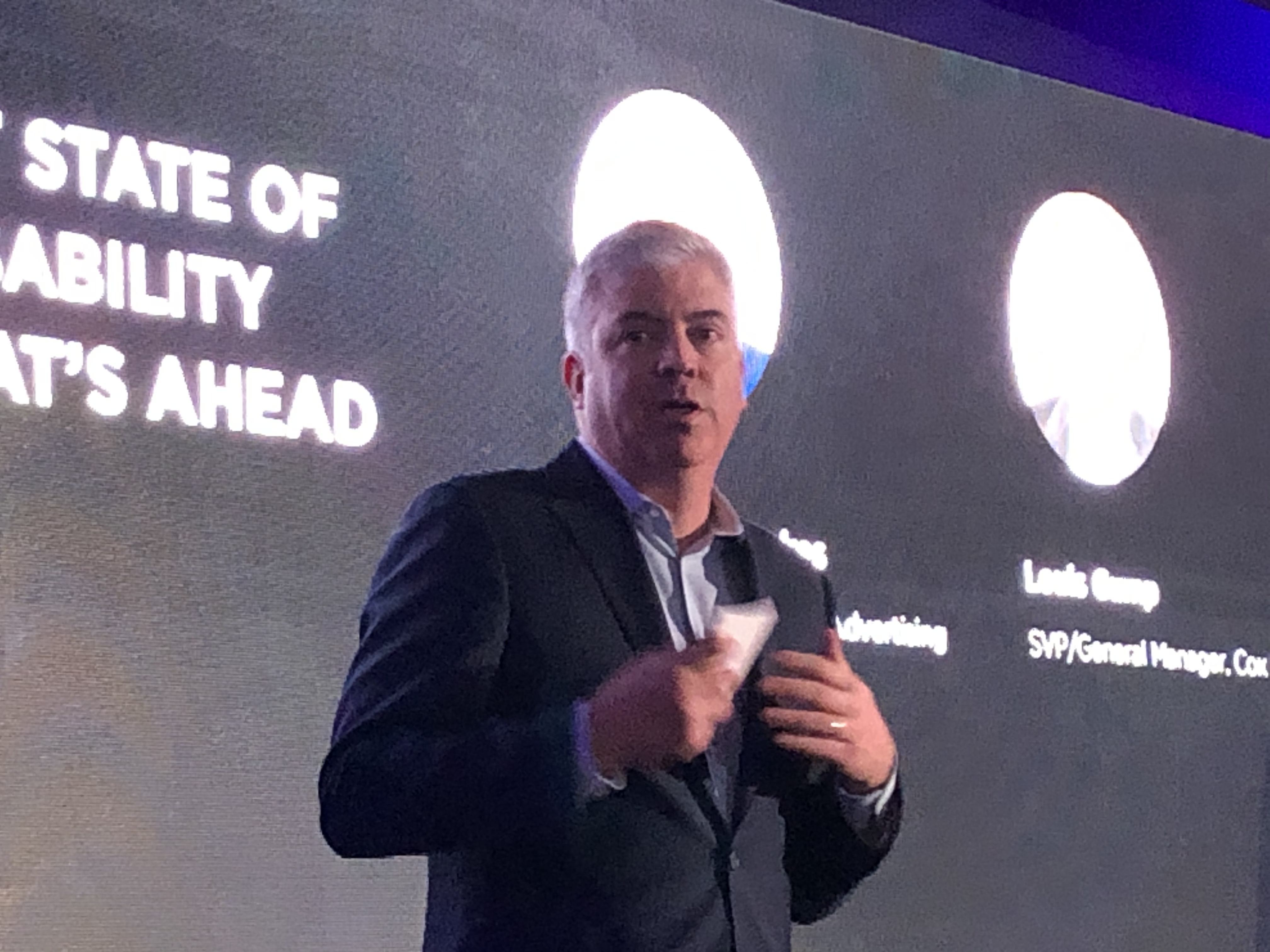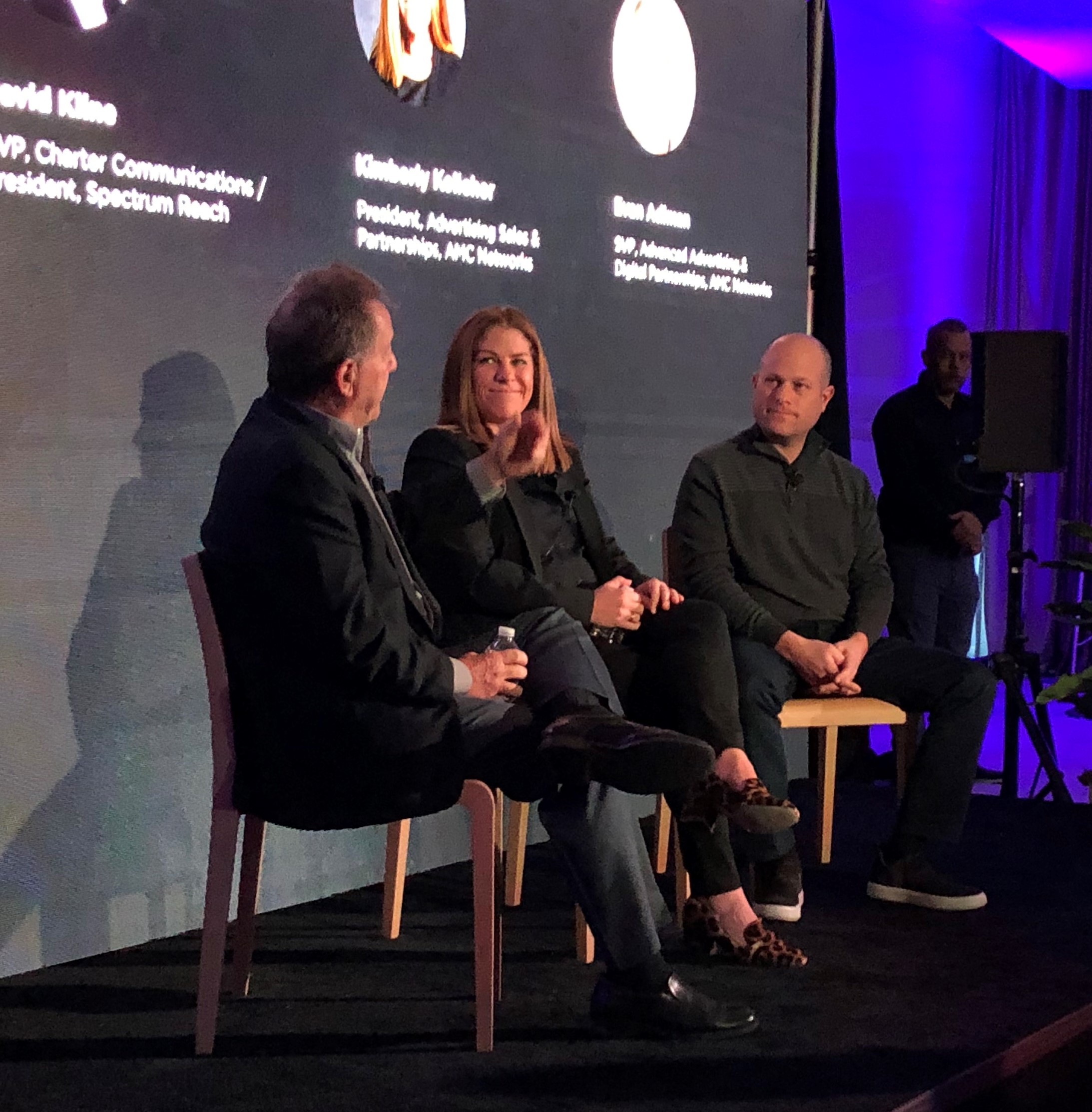Comcast: Addressable Ads Counter ‘Peak Fragmentation’

Comcast Advertising and its FreeWheel technology unit provided an update on the On-Addressability initiative, which aims to unite the industry and make television advertising more attractive and effective for marketers.
“We’re excited about the power of television in all the shapes it is taking,” Marcien Jenckes, president of Comcast Advertising, said speaking at an event at the CES Conference in Las Vegas on Tuesday. “We need to join hands to bring the industry along with us.”
Comcast was initially joined in the On Addressability initiative by Charter Communication and Cox Cable. Jenckes said other major distributors would be joining soon, adding even more scale to the addressable platforms.
Some networks were also going to be running campaign over multiple distributors to show advertisers that addressability has scale and is easier to buy, Jenckes said.
David Dworin, VP of advisory services at FreeWheel said that this year would mark “peak fragmentation,” making it more difficult for advertisers to reach mass audiences. “Addressable is helping marketers get access to those ad impressions with people who do not watch TV as much as they used to.”

Louis Gump, senior VP and general manager at Cox Media stopped short of calling this the year of addressability. But “you can start to see an inflection point,” he said
“We don’t believe at Cox Media that addressable is a panacea. It’s part of the mix we use to serve our customers better,” he said.
Broadcasting & Cable Newsletter
The smarter way to stay on top of broadcasting and cable industry. Sign up below
A couple of client marketing executives were on hand to talk about how they approach addressability.
“Our ad dollars can only stretch so far,” said Kay Vizon, director of media services at Kroger. Instead of mass marketing, the supermarket chain has moved to “who-based planning” for its media. The goal is “getting the message right, landing it right, customizing it and measuring the heck out of it,” she said.
Campaign are also being evaluated based on business outcomes rather than traditional media metric, Vizon said. “We look at both, but make decisions based on the business outcomes. What it means is connecting the dots.”
Kroger has seen good results from addressable with some campaigns ringing up 30% improvements in media ROI and producing a 28% lift in sales.
Addressability also lets Kroger address different segments of its shoppers with different messages. Kroger identified three important groups: people focused on the quality of their food and not on price; you families looking for bargains and people with no time to shop.
“Addressability allows us to target those segments in a first party way and take our ‘Fresh for Everyone’ brand message and tailor it so it’s relevant for each of those segments.”
Todd Kaplan VP, marketing at Pepsi, said even a product with broad appeal like a soft drink need to target messages. “It put more pressure on the creative. If the creative sucks, nobody cares. If you don’t know who you’re talking to, no one cares.”
Addressability can also be helpful to the networks FreeWheel works with.
Four months after being hired as president of advertising sales & partnerships at AMC Networks following a career with magazine publishers and digital media, Kimberly Kelleher noted that other media have already gone through the disruption digital advertising can cause.
By comparison, the disruption of TV advertising has barely begun, Kelleher said. “This medium hasn’t really been impacted by that yet in a positive way,” she said, adding that addressability will be good for AMC.
“It’s going to force us to be much more collaborative than we have been in the past,” she said, adding that AMC is well positioned as a smaller, nimbler company where the executives are all pulling in the same direction, as opposed to some bigger competitors that are still sorting things out.
“I don’t want to throw caution to the wind, but we have to try more, we have to fail more and we have to partner more aggressively,” she said.
But addressable isn’t about to overtake the traditional advertising business. Kelleher said some advertisers will still want a broad range of eyeballs. “This is going to be more niche for advertisers who have audience segments that are highly targeted and who know exactly where they are.”
Also, she noted, “right now it’s still expensive to do this. We need to build this together.” And that means making networks and advertisers making investments together.
“I’d love to see the premium aspect of this be embraced, not negotiated,” Kelleher said.
Jon has been business editor of Broadcasting+Cable since 2010. He focuses on revenue-generating activities, including advertising and distribution, as well as executive intrigue and merger and acquisition activity. Just about any story is fair game, if a dollar sign can make its way into the article. Before B+C, Jon covered the industry for TVWeek, Cable World, Electronic Media, Advertising Age and The New York Post. A native New Yorker, Jon is hiding in plain sight in the suburbs of Chicago.

